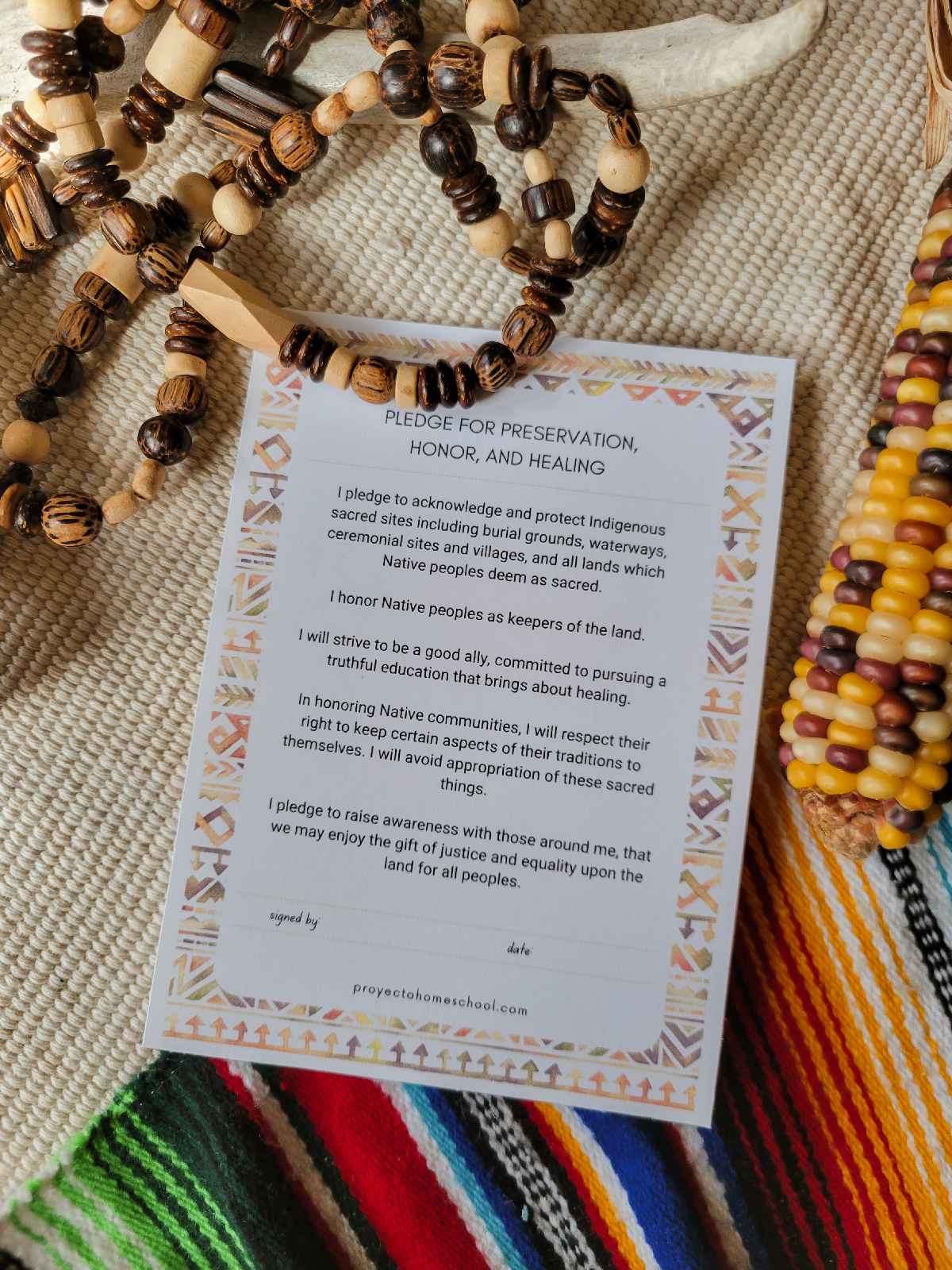I grew up in a Mexican-Native household where thanksgiving was not celebrated. Feasting on this day was a tradition I tried to adopt when my husband and I first got married since it was something he was accustomed to. But the more we worked on decolonizing and reclamation in our family, the more uncomfortable we became with it. Some years back we decided to replace celebrating thanksgiving with self reflection, education, and appreciation for our Native roots while still embracing an attitude of gratitude. As soon as our ofrenda is taken down, the rest of November is all about Native American Heritage Month.
As an Indigenous homeschool educator, this presents a unique opportunity to teach my children about Native American heritage in a respectful and meaningful way. By incorporating Native American culture, history, and perspectives into our homeschool curriculum, we have gained a deeper understanding of our Indigenous relatives and their ways.
Below are some simple things you can do to honor Native American Heritage in your homeschool, not just for November, but the entire year. Read all the way to the end for a free printable.
1. Educate Yourself First: Before teaching your children about Native American heritage, it's essential to educate yourself on the subject. There is a wide range of nations and cultures within Native American communities, each with its own distinct traditions and histories. Start by reading books like Braiding Sweetgrass and An Indigenous Peoples History of the United States. Watch documentaries like Gather or Native America. Attend online or in-person events that focus on Native American history and culture. Learning from Native American authors and experts is particularly valuable, as it ensures that the information you're passing on is accurate and respectful.
2. Diversify Your Curriculum: Incorporate Native American perspectives into your homeschool curriculum. Explore the contributions of Indigenous peoples like Sacagawea, Chie Si'ahl, and Lewis Tewanima. Study the history of the original peoples in your region, read literature written by native authors, or delve into ecological lessons that showcase native approaches to sustainability.
3. Indigenous Art and Crafts: Be sure to approach Indigenous symbols and practices with respect. Work to understand the cultural, spiritual, and historical significance of handcrafts such as beadwork, weaving, and pottery. Certain items such as "feather headdresses" are in actuality sacred ceremonial pieces and should not be replicated. Some Indigenous practices are meant to be closed, meaning that they are not for outsiders to participate in. If you wish to display Indigenous arts, crafts, or items like dreamcatchers, purchase them from Native artisans who create them with cultural integrity.
4. Storytelling and Oral Tradition: Many native cultures have a strong tradition of oral storytelling. Share Native American myths, legends, and oral histories with your children. These stories often convey important cultural values, lessons, and historical events. You can find collections such as Native American Stories for Kids from various nations and share them as part of your homeschool lessons.
5. Virtual Field Trips: While physical field trips may not always be possible, you can take virtual field trips to museums, cultural centers, and historical sites related to Native American heritage. Many institutions offer virtual tours and educational resources. We like to use Google Earth and our VR set for an immersive learning experience.
6. Land acknowledgements: Land acknowledgement is a traditional custom dating back centuries for many Natives. Land acknowledgement is a way of showing respect and honoring the Indigenous peoples of the land on which we work and live. It's a simple way of resisting the erasure of Indigenous histories. You can use the wording below for your own acknowledgements
“We acknowledge that we are on the ancestral lands of the [tribe/nation] people. A people that are still here, continuing to honor and bring to light their ancient heritage.”
7. Advocate for Indigenous rights: The best way to honor Native Peoples is through real action like supporting Indigenous efforts to protect cultural heritage, land, and rights. I've created a printable Pledge for Indigenous Preservation, Honor, and Healing. Download now and take the pledge to stand with Indigenous People. Place your printed copy where you can see it daily, as a constant reminder of your allyship.








